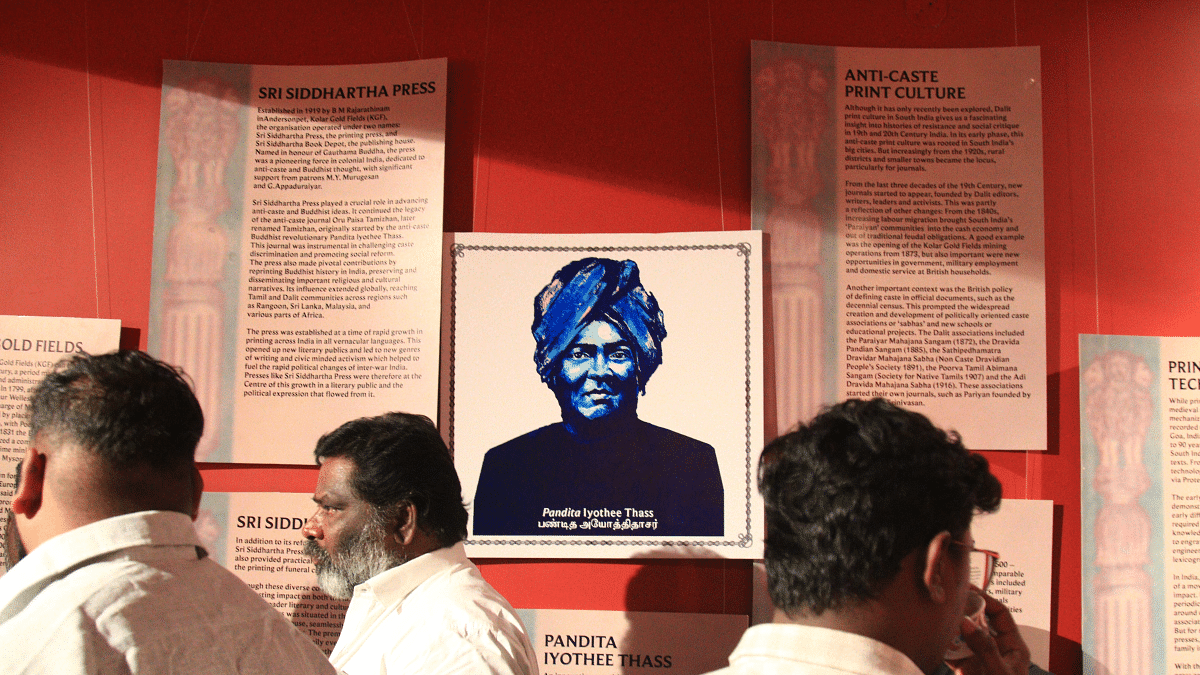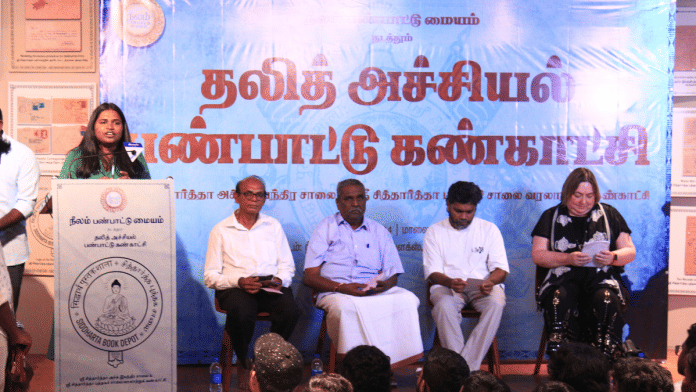Chennai: A new Chennai exhibition is reminding Tamils about an unacknowledged hidden intellectual history — the Dalit printing presses that fostered a subculture of books and magazines in hostile times.
Among the exhibits are the front page of the magazine Tamilan that revived Tamil Buddhism, the cover page of anti-caste revolutionary C Iyothee Thass’s Sri Murugakaduvul Varalaru that looks at lord Murugan through the prism of counterculture, and a commentary by C Manikkam on Tamil Buddhist epic Manimekalai.
From the state’s anti-caste movement to Dravidian politics, these documents not only throw light on Tamil Nadu’s rich history of dissent and Dalit print culture, which is often neglected by the mainstream.
“The most common blame imposed on the Dalits is that they don’t have culture or education. We keep on hearing that everything was given to us. It leads to a question of what we have or what we had,” said Tamil director Pa Ranjith, whose Neelam Cultural Centre has put together the exhibition titled ‘From Paper to Pixel: Unveiling Dalit Print Culture’. He said the questions will lead to the quest on history and the presence of the community in the state, which is often not documented.

“Documentation is important. Neelam was started to document the untold stories untold and the cultures that are not recognised,” he said.
Also read: How did ancient Indians, Africans, Greeks understand science? Panch tatva, God, myth
A ‘personal connection’
The exhibition features the Sri Siddhartha Press started by BM Rajarathinam in the township of Andersonpet in Karnataka’s Kolar Gold Fields (KGF) in 1919. The press, named after Buddha, propagated Buddhist thoughts and literature. Divided into different sections, the exhibition starts with the history of printing in India, the Dalit movement, a glimpse of Rajarathinam and his family, and ends with a collection of digital images of the books and other commercial documents the Siddhartha Press printed over the years. Opened on 9 September 2024, the exhibition is open to the public till 16 September.
The Neelam Cultural Centre was established with the aim to ensure equality, social justice and mainstreaming the culture and lifestyle of the downtrodden.
“When I read history in school, it often glorified a kind of people that – I could never relate with. But when I look into this, there is some sense of personal connection. Researching for and curating this exhibition has been personally motivating for me,” Yashashwani told ThePrint. The 27-year-old, currently pursuing PhD in Dalit movement in Karnataka at the University of Leeds in the UK, said documenting Sri Siddhartha Press is significant as it comes from a space of powerlessness and deprived atmosphere. She added that she would like to see the story of Dalit print culture in history textbooks so that the students from the community can feel empowered.
(Edited by Humra Laeeq)






